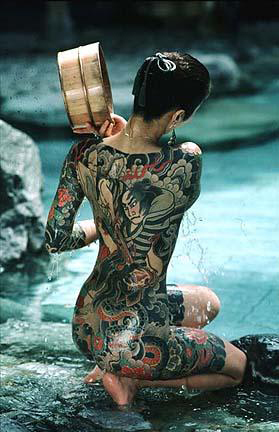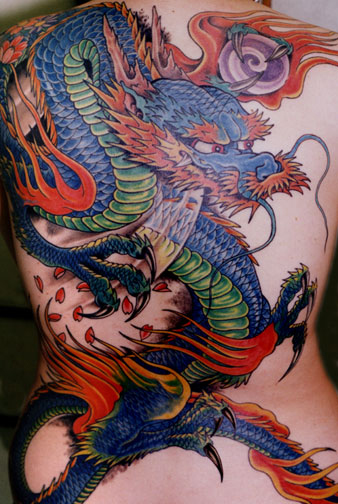
 |
 |
Between 1603 - 1868 Japanese tattooing was only practiced by the "ukiyo-e" (The floating world culture). generally firemen, manual workers and prostitutes wore tattoos which communicated their status. Between 1720 - 1870 Criminals were tattooed as a visible mark of punishment, this actually replaced having ears and noses removed. A criminal would often receive a single ring on their arm for each crime committed which easily conveyed their criminality. This practice was eventually abolished by the "Meji" government who banned the art of tattooing altogether, viewing it as barbaric and unrespectable, this subsequently forced a sub culture of criminals and outcasts, many of whom were the old Samurai warriors ("Ronin" - Master less). These people had no place in "decent society" and were frowned upon, they were kept separate and simply could not integrate into mainstream society because of their obvious visible tattoos, this forced them into criminal activities which ultimately formed the roots for the modern Japanese mafia - "Yakuza" for which tattoos in Japan have almost become synonymous .
Info courtesy of: